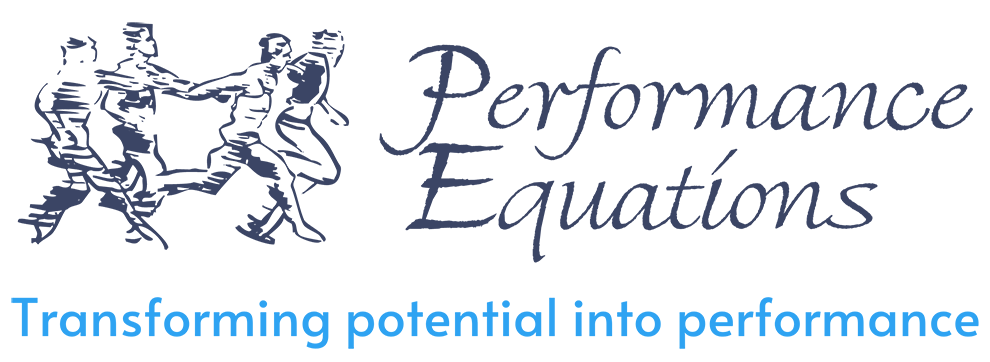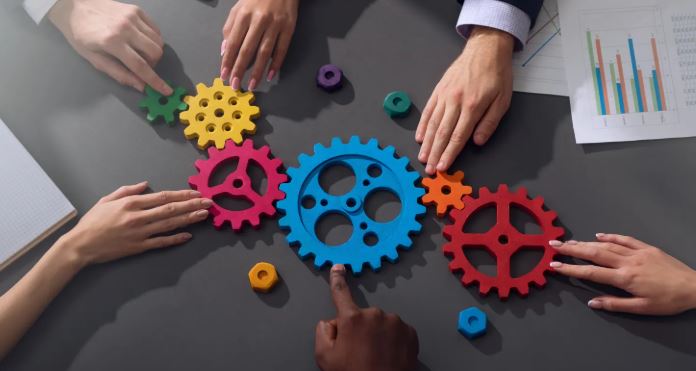I’m going to guess that if you were to ask any senior team whether they collaborate well, most will say “of course we do.”
I’m not so sure.
Both attitude and relationship dimensions impact on successful cross-functional or cross-boundary collaboration.
I appreciate they spend hours in meetings, share updates, and make collective decisions.
But the uncomfortable truth is that what many senior teams call collaboration is often just coordination in disguise.
Somehow we confuse collaboration with simply getting along and synchronising activities. Cooperation is transactional. We exchange information, coordinate tasks, and stay civil. Collaboration, on the other hand, is generative; a messy process of creating something new together. It means surfacing different perspectives, navigating disagreement, and jointly shaping outcomes that no one could have produced alone.
Trouble is, it’s also less comfortable. It demands we step into uncertainty, letting go of our attachment to being right, and tolerating the tension of not knowing. That’s a tall order when the pace is relentless, results are due on Friday and my attitude is “by the way I have years of experience of what to do in these circumstances.”
Both attitude and relationship dimensions impact on successful cross-functional or cross-boundary collaboration. How all the parties to the collaborative effort think and feel about others shapes everything about the collaboration. True collaboration isn’t simply a technique or a process. It’s a way of being with others; our mindset, assumptions and relational stance count. As Dr Carrie Goucher often argues, collaboration requires an attitudinal shift from all knowing to more curiosity.
When pressure rises, senior teams tend to retreat into familiar habits; control, efficiency, and getting things done. Under stress we tend to default into older ways of thinking about leadership, focusing on providing guidance and direction rather than connecting and enquiring.
Your context (‘the system’) influences
True collaboration needs what Chris Argyris called “skilful dialogue” where people express their thinking clearly but also listen to understand the thinking behind others’ views. Few meetings achieve that.
It’s understandable. The corporate environment rewards individual delivery. Targets, budgets, and KPIs all reinforce the idea that my success sits in my silo. Collaboration, with its slower conversations and tangled emotions, can feel a bit like a luxury.
The thing is, during crises, it’s precisely when it’s most needed. Leaders often say, “We haven’t got time for this right now.” Yet that’s when collective sense-making and joint problem-solving matter most. A recent client deprioritised collaboration during a major restructure, they later admitted it caused them unnecessary pain. “We could have saved ourselves a lot of grief,” they reflected, “if we’d made time to hold space for each other.”
And the rhythm of how we conduct the business structurally often doesn’t help. Senior leaders often assume their team meetings are the collaboration moment. Meetings are when people think they’re collaborating, but they’re not. Meetings too often become rounds of advocacy: “I’ll promote my view, then you promote yours.” There’s debate, but little dialogue. True collaboration needs what Chris Argyris called “skilful dialogue” where people express their thinking clearly but also listen to understand the thinking behind others’ views. Few meetings achieve that.
Part of the problem is structural. Meetings have barely evolved from the industrial era. Like 19th-century factories, the focus is on process. Start on time, follow the agenda, finish on time. But process alone doesn’t produce collaborative thinking. Without clear norms and structures that support the right behaviours meetings can default to status games where the loudest voice or the most confident opinion carries the day. Getting through the meeting agenda feels efficient. But every time a leader closes down debate too quickly, they reinforce that behaviour and diminish the team’s collective intelligence.
We also need some simple frameworks that hold the social process in place while people learn new habits.
Productive collaboration is so counter-intuitive. It asks us to suspend our certainty and explore what others see that we don’t. It requires a mindset of curiosity rather than advocacy. What Ed Schein called “humble inquiry.” But humility is hard when you’ve spent years becoming the expert.
A collaboration framework
If skill and mindset aren’t enough, what helps? We also need some simple frameworks that hold the social process in place while people learn new habits. The Amherst H Wilder Foundation have researched and proposed a series of factors that must be in place for successful cross-functional collaboration. These should be agreed and contracted by all parties to the collaboration effort and are fundamental to my mantra of clarity, unity and agility.
The first is a compelling context for everyone. Is there a clearly specified purpose for collaborating and a shared vision that everyone understands and agrees with? Have concrete, attainable goals been established and committed to? Do the structures, resources and activities of the collaboration keep pace with the changing needs of the collaborators without diminishing their capacity? Remember that their work is likely to be wider than just collaborating with others.
Are the right people collaborating? The interaction of different operational areas might seem obvious. But very often there are multiple layers of participation, so clear roles and decision-making rights need to be agreed as well as an understanding of how everyone wins from the collaboration effort.
Is the organisational culture supportive of cross-functional collaboration? Is collaboration part of the business DNA, not just conceptually but in expectation and action. Do people go out of their way to build inter-personal trust and psychological safety among the people they have to collaborate with and more widely? Is there open and frequent communication that adds specific value to all the collaborators?
Remember that the ‘system’ unintentionally creates barriers to collaboration. Even with the best of intentions, the system often works against collaboration. Most organisations are built on individual metrics of success. Leaders are rewarded for delivering their P&L, not for contributing to others’. Until performance systems reflect shared accountability, collaboration risks remaining a side project.
The last set of factors are all to do with being collaborative. While a team or an organisation generally can set up methods, practices and procedures for collaborating, the human factor is immensely important. Do collaborators engage with each other with a desire to collaborate not just because of what the individual gains, but because of a genuine desire for ‘win-win’ outcomes? Do they genuinely seek creative ways to manage potential conflicts? Do they enter into the collaborative relationship with a spirit that actually fosters cooperation with others?
How people feel when collaborating with others (is it easy or is it a struggle) shapes the quality of their thinking. Teams rarely talk about that. Yet you can feel the weight people are carrying. Their challenges don’t stay at the door. Emotions drive energy, engagement, and trust. When the emotional climate is poor, collaboration dries up. When people feel safe, respected, and genuinely listened to, ideas flow. Senior teams need to be intentional about creating a safe, productive thinking environment.
The Cost of Not Collaborating
When collaboration fails, the signs are obvious: circular debates, slow decisions, duplicated effort, silo protection, and emotional fatigue. The cost is enormous in wasted brainpower, disengagement, and strategic drift. When people shut down we lose innovation and creativity.
Conversely, when collaboration flourishes, it feels different. There’s curiosity instead of certainty. Disagreement without hostility. A shared sense that we’re figuring things out together. It’s slower at first but faster in the long run because the decisions stick, and people own them. Ultimately, that’s strategic speed.
A Final Thought
If there’s one theme we can lose sight of is that collaboration is not a soft skill. It’s a hard discipline of thinking, relating, and deciding together, under pressure, across differences, with shared accountability.
So let me leave you with this thought. When your team next meets, notice how much of the conversation is about advocating and how much is about exploring. What might happen if you invited the group to think together to achieve a win-win? Might that be the moment collaboration truly begins?

